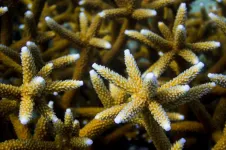(Press-News.org) Every year in Canada, six trillion litres of municipal wastewater are partially treated and released into the environment, while another 150 billion litres of untreated sewage are discharged straight into pristine surface waters.
Now researchers have found a way to stem that flow: by filtering the waste through the roots of willow trees. Experimenting with a plantation in Quebec, the scientists estimate that over 30 million litres of primary wastewater per hectare can be treated using 'bio-refinery' annually.
Their results were published June 14 in the journal Science of the Total Environment.
"We're still learning how these trees can tolerate and treat such high volumes of wastewater, but willows' complex 'phyto'-chemical toolkit is giving us exciting clues," said Eszter Sas, lead author of the study and a PhD student at Université de Montréal.
Willow trees are naturally tolerant of contamination and their roots filter out the high nitrogen in sewage, actually tripling the biomass produced, which can then be harvested for renewable lignocellulosic biofuels, an alternative to fossil fuels.
Second generation biofuels
This biomass can then be collected to make renewable lignocellulosic biofuels. An alternative to fossil fuels, these so-called second-generation biofuels do not directly compete for raw materials in the food chain
In their research, Sas and a Canadian-British team of crop scientists, biochemists and chemical engineers from UdeM and Imperial College London used advanced metabolomic (chemical) profiling technology to also identify new extractable 'green' chemicals produced by the trees.
In addition to salicylic acid (best known as the main ingredient in aspirin), which willows produce in high quantities, an array of 'green' chemicals were enriched through sewage filtration, which have significant antioxidant, anticancer, anti-inflammatory and anti-microbial properties.
"While most of the induced chemical compounds have not been seen before in willows, some have been observed in salt-tolerant plants such as liquorice and mangroves and are known to be potent antioxidants," said Sas.
"Intriguingly, a number of the induced chemicals are entirely uncharacterised and a mystery. It's amazing how much novel plant chemistry there is still to be discovered, even in willow trees, which have been around for thousands of years," she added.
"It seems likely that we're still only scratching the surface of these trees' natural chemical complexity, which could be harnessed to tackle environmental problems."
Surprisingly high yields
Looking at the impact that wastewater treatment by willows would have on annual lignocellulosic biofuel and 'green' chemical yields, Sas' team had expected negative repercussions of irrigating their experimental plantation with sewage.
However, they were surprised when the yields actually went up so high.
"One of the benefits of using natural solutions to address environmental challenges like wastewater treatment is that we can generate complementary bioproducts, such as renewable bioenergy and green chemistry," said Sas's PhD supervisor at UdeM, senior author Frédéric Pitre.
"This concept of a biorefinery seems to be fantastic in allowing new environmental technologies to compete economically with the highly established markets of petroleum-based fossil fuels and chemicals while also helping to reduce ongoing human damage to the ecosystem."
INFORMATION:
About this study
"Biorefinery potential of sustainable municipal wastewater treatment using fast-growing willow" by Eszter Sas et al., was published June 14, 2021 in Science of the Total Environment. The research was supported by funding from Environment and Climate Change Canada's Environmental Damage Fund, the Natural Sciences and Engineering Research Council of Canada, IREC, MITACS, Natural Resources Canada's Forest Innovation Program and a Grantham institute (NERC) 'Science and Solutions for a Changing Planet' studentship.
[Brooklyn, New York] - [June 21, 2021] - Applied Biological Laboratories (Applied Bio), a biopharmaceutical company focused on the respiratory disease market, announced that its study published online in Immunology, Inflammation and Disease was able to determine the mechanism behind respiratory inflammation and treat it effectively with Biovanta(TM), a 100% naturally derived, over-the-counter (OTC) drug for cold, cough and sore throat.
The study results also showed that almost all of the leading OTC products on the market can damage the upper respiratory cells and may prolong illness. This research study and its findings represent one of the first major breakthroughs in decades for the cold and flu market.
The study, titled ...
UNIVERSITY PARK, Pa. -- Clickbait headlines might not be as enticing to readers as once thought, according to a team of researchers. They added that artificial intelligence -- AI -- may also come up short when it comes to correctly determining whether a headline is clickbait.
In a series of studies, the researchers found that clickbait -- headlines that often rely on linguistic gimmicks to tempt readers to read further -- often did not perform any better and, in some cases, performed worse than traditional headlines.
Because fake news is a concern on social media, researchers have explored using AI to systematically identify and block clickbait. However, the studies also suggest ...
Amazon rain forests could be at far higher risk of extreme drought than previously thought, according to new research.
An international study, led by the University of Leeds, warns that huge areas in the eastern part of the Amazon face severe drying by the end of the century if action is not taken to curb carbon emissions.
As a result, large amounts of carbon dioxide would be released from the forest into the atmosphere,
adding to the greenhouse gas effect and driving further climate change.
The increased dryness during the Amazon dry season would further threaten the viability of large parts of the rainforest, as trees are already water stressed and there is greater risk of forest fires.
The predicted droughts could also have far-reaching consequences ...
Vanadium oxo (VO) species were often used to oxidise sulfide/amine compounds and alkenes when combined with peroxide oxidants. VO species are well known as important vitamin supplements for potential diabetic prevention. They are highly prevalent as metalloenzyme like haloperoxidase. The current catalyst class comprises VO species, substituted-salicylaldehyde, and alpha-amino acids that are nontoxic and highly enriched in ascidian sea animals and plants. Professor Chien-Tien Chen of NTHU pioneered aerobic asymmetric couplings of 2-naphthol with VO species to form optically active binaphols in 2001 (reported in C&EN News, 79(20), 45-57(2001)), which was believed to proceed in a VO-bound, single/dual-mode activation or free radical-radical/free ...
What causes an eruption? Why do some volcanoes erupt regularly, while others remain dormant for thousands of years? A team of geologists and geophysicists, led by the University of Geneva (UNIGE), Switzerland, has reviewed the literature on the internal and external mechanisms that lead to a volcanic eruption. Analyzing the thermo-mechanics of deep volcanic processes and magma propagation to the surface, together with magma chemistry, the geologists determined that most of the magma rising from depth actually does not cause a volcanic eruption. They also show that older volcanoes tend to produce less frequent, but larger and more dangerous eruptions. Their findings, published in Nature Reviews ...
A new study published in Nature Communications demonstrates the important role that planting new commercial forests could play in the fight against climate change by including new accounting of greenhouse gas (GHG) mitigation achieved from future use of harvested wood.
The study applied a novel, time-dependent assessment to capture the complex dynamics of carbon uptake, storage and partial eventual release back to the atmosphere, alongside product and energy substitution by wood products, over a 100-year timeframe.
Uniquely, the study considered multiple wood uses along multi-decadal cascading value chains (e.g. construction timber to paper to bioenergy), and future projections on wider decarbonisation of substituted ...
Although the emissions targets for aviation are in line with the overall goals of the Paris Agreement, there is a high likelihood that the climate impact of aviation will not meet these goals, according to a new study.
Aviation is an important contributor to the global economy, but contributes to climate change by creating carbon dioxide (CO2) as well as non-CO2 effects such as forming nitrogen oxides, ozone and contrailcirrus clouds, which all contribute to global warming.
Researchers believe that, as long as the industry stages a recovery, the restrictions placed on global air travel in response to COVID-19 lockdown will only have ...
Warming seas are driving many species of marine life to shift their geographic ranges out of the tropics to higher latitudes where the water is cooler. Florida's reefs will not be able to make that northward move, however, as they will be caught between intolerably hot tropical waters and increasingly frequent water-cooling cold snaps, according to new findings from Florida Institute of Technology, the U.S. Geological Survey, and several other institutions to be published June 22 in Nature's Scientific Reports.
Populations of the main species of reef-building corals are ...
Published in The Lancet Regional Health - Europe and part-funded by National Institute for Health Research (NIHR) Maudsley Biomedical Research Centre, the study identified that people with multiple respiratory conditions were most likely to develop depression and anxiety later on. This has possible implications for future healthcare services if the Covid-19 pandemic brings about increases in long-term respiratory issues. The study confirms the importance of integrating mental health support early into care plans for those with multiple physical health conditions.
This is the first study of ...
6.4% of the European population suffers from depression, according to a study published in The Lancet Public Health. The work was led by researchers from King's College London, the Hospital del Mar Medical Research Institute (IMIM), the Parc de Recerca Sant Joan de Déu-Institut de Recerca Sant Joan de Déu, the Institute of Biomedicine at the University of León (IBIOMED), and the CIBER on Epidemiology and Public Health (CIBERESP). This figure is higher than that estimated by the World Health Organisation (WHO), which calculated the prevalence of this pathology ...




